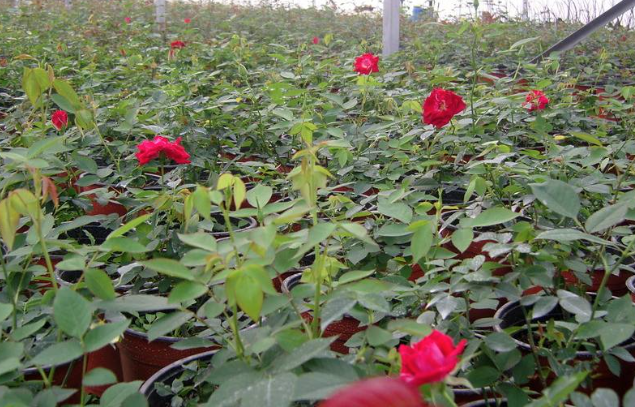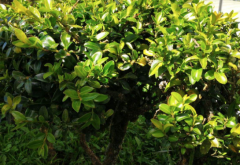What are the methods and techniques of planting roses? What are the conditions for planting roses? what kind of soil do you need?
The cold winter makes it difficult to grow beautiful roses in the northern and Midwestern gardens. A limited number of varieties can survive on their own, and many need winter protection. Many rose bushes even need protection, even in relatively mild winters (up to Zone 6 or Zone 7) to ensure that healthy plants in spring provide wonderful flowers.

Plant rose bushes
Proper planting makes the hardest rose bushes the best opportunity for a long and healthy life. Most roses need at least six hours of sunshine, but the sun is best all day, especially in cold climates. Good soil is as important as adequate moisture. To reduce fungi, if possible, plants are planted in a breezy place to increase air circulation. Don't crowd out your plants, give them plenty of "space" for themselves.
For bare-root roses (no soil, not in the pot), soak the roots in a bucket of water while preparing the planting site. You can soak them for 12 hours. Then dig a hole that is wider and deeper than the size of the root, at least 18 "wide, deep, and 24 at most." You can't dig a hole too big, but if it's too small, it will fill the root. Roses don't like wet feet, but they do like a lot of water. Deep holes will provide good drainage. If you have clay or compacted soil, it is especially important to collect water at the bottom of the hole. If you have sandy or fertile soil, 18 inches deep should be enough.
It is wise to test your soil before planting roses. They prefer neutral soil, which is slightly acidic or alkaline. If you grow in acid or clay, add a small amount of lime when modifying the soil.
Test the hole depth by putting the rose plug into it. Keep budding on the ground (the "bulge" that connects the stem to the rhizome), and the root should not touch the side or bottom of the hole. Sprinkle 1 big 2 cups of bone powder or superphosphate at the bottom of the hole to stimulate root development. Add compost to the soil you remove, a couple shovel it all over, and if your soil is clay, add the same amount of peat moss. You can also add additional natural nutrients to the soil, an additional 2 cups of bone meal and blood meal, and a cup of cottonseed meal. Chemical fertilizer will burn new roots. Mix it evenly and add a small amount to the hole.
Process the improved soil from the bottom and side of the hole, form a mound at the bottom of the hole, continue to add more modified soil and work in the soil from the side until the mound is large enough to support the plant, and the bud alliance has just passed the ground. As the loose soil settles, the plant will decrease, allowing the buds to bind to the ground. Arrange the roots carefully so that they do not tangle or fold. Start adding improved soil, work gently around the roots with your hands until the hole is about 3pm and 4 full, then gently tamp the soil. Fully fill the hole with water, let it soak, and then fill it again.
Now trim the stick (stem) back to about 6-10 inches and remove any damaged sticks. If the rhizome is twice the size of the root, there are not enough roots to feed the plant, and the rose will grow slender. Cut above the outer bud of the crutch and cut it at an angle with a sharp rose pruning. Finish filling the hole and overlap the excess on the crutch. This will protect the walking stick and keep it moist while the rose bushes build its roots. With continuous watering, the mound will compress over time. If your roses are potted, the same principle applies, but you certainly won't form a root mound. Make sure the hole is at least 6 inches wider than the pot. If you can see the buds combine, position them above the ground.
Lay a thick cover around the rose bushes to prevent water from splashing on any fungal spores that may exist. Water deeply every 4 or 5 days. You don't need to fertilize, and the organic modifiers you mix into the soil will slowly feed your roses as they mature. Chemical fertilizer can burn new roots. As leaves begin to appear within 3 to 6 weeks, spray stems, leaves and surrounding soil with fungicides for dark spots. If the mound has not completely settled at this time, please carefully remove the mound with your fingers so that any new growth will not be damaged.
If you are planting grafted roses, place the bud complex at the soil level, or position it 1 or 2 inches or more below the soil level in colder climates. In Zone 4 or colder areas, you can plant grafts 4 inches deep. If you lose the highest growth to winter death and bud onions are protected, your roses are likely to grow again. Be sure to read the maintenance instructions for grafted roses in order to understand the difference between grafted roses and self-rooted roses.
- Prev

Is it easy to plant evergreen trees? how to plant them? When is it better to transplant? what are the points for attention?
Evergreen is a popular way to plant trees, so is it easy to grow? How to plant it, and what matters should be paid attention to in the process of planting? Let's have a look! The best time to plant evergreen evergreen trees can be planted at any time that suits you, but there are
- Next

How to control red fire ants? What are the reasons for the spread of red fire ants?
The red fire ant is a kind of ant that is harmful to human. Once bitten by this ant, the wound will be red, swollen and inflamed. So how to control red fire ants? Let's take a look. The control of red fire ants is not only carried out by environmental protection, agriculture or epidemic prevention units, but also by land rights.
Related
- A course of planting techniques and methods on how to grow carrots
- How to plant the latest tulips?
- Is it better to pick tea in the morning or in the afternoon? When is the best time for tea to be picked? what is the third or fifth tea?
- Launch Yuanxiao Happy combination Haocha + Tea Yuan healthy Taste
- Penghu Tourism "Fireworks 20 Parade with You"
- 2022 West Lake Happiness holds "Digital Revitalization Voucher" and draws iphone13 and laptop.
- Banqiao Fuzhou social houses are designed to change start-up combined with police elimination to create a safe and livable environment
- The convenient measure of "mechanical weeding" in Xinbei has been abused and the Agriculture Bureau has imposed heavy penalties on the illegal land consolidation.
- Changgeng University Joins Hands with Four Memory Factories to Rescue Memory Talent Shortage
- The list of Taiwan's top 100 MVP managers is listed by the Director-General of the Farmers' Association of Sanxia District.

